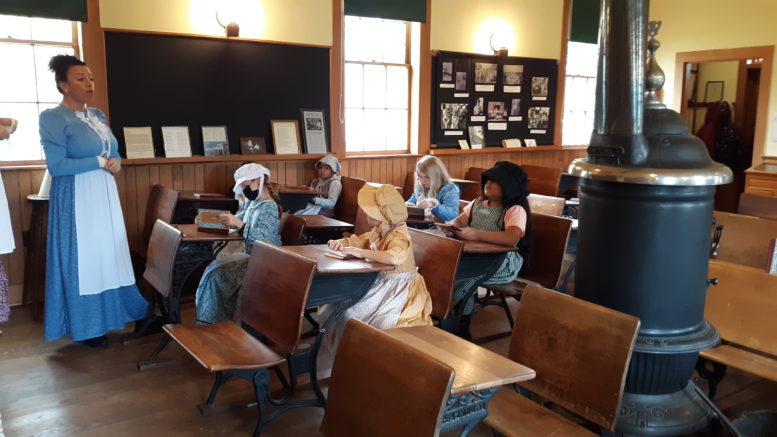By JAN LARSON McLAUGHLIN
BG Independent News
As second graders practiced penmanship on slates in the one-room schoolhouse, Starship robots were delivering food outside.
The lesson – times have changed.
On Wednesday, one second grade class from Crim Elementary School traveled back in time to learn at Bowling Green State University’s Little Red Schoolhouse, originally built in 1876. The other two classrooms will follow.
This field trip is the culmination of exploration of the social studies standard of “how technology has changed everyday life,” according to Stacey Higgins, one of the second grade teachers at Crim.
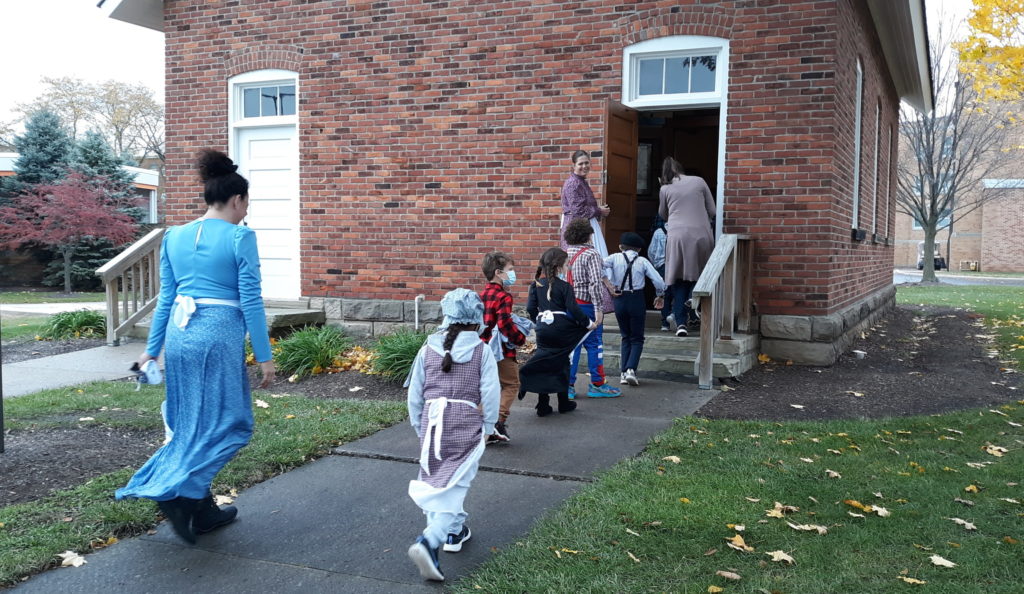
Students dressed in “old fashioned clothes” from home and donations. The girls – who sat on one side of the school separated from the boys – wore long dresses with aprons and bonnets. The boys wore button down shirts, some with suspenders.
After walking from Crim to the one-room school, the children hung up their coats in the cloakrooms (one for boys and one for girls) and sat at the old wooden desks surrounding the pot-bellied stove in the middle of the room.
“This allows us to immerse them in a learning experience,” said second grade teacher September Killy, whose class went to the one-room school on Wednesday. “We try to be as authentic as possible.”
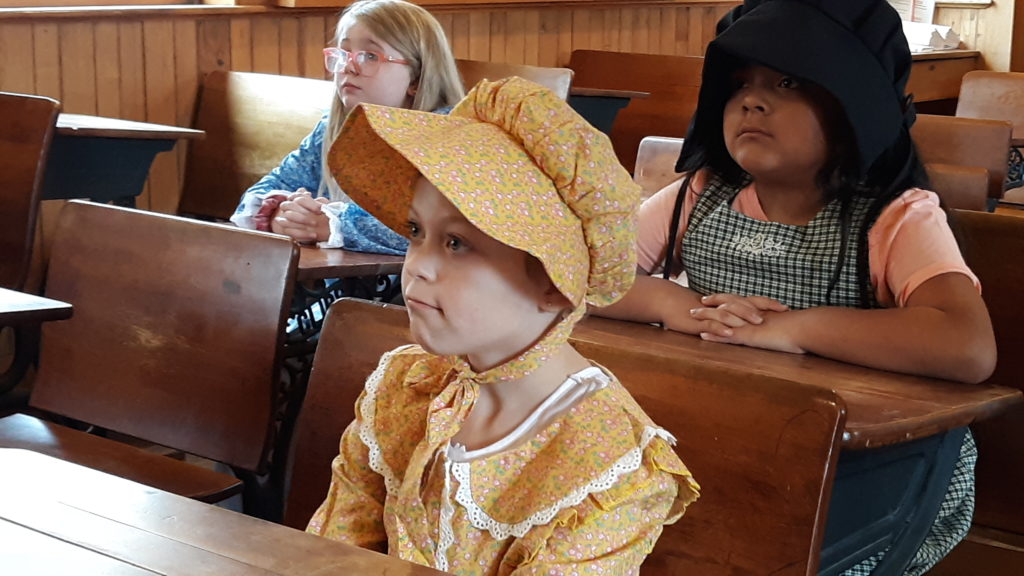
The students started the morning by telling their teacher about the chores they performed at home before they could come to school. One student talked of collecting eggs, another about getting wood for the stove, and another about feeding a horse.
And one student said she had to clean the Xbox.
“We had to have a conversation about that,” Killy said with a smile.
The children learned that unlike their classroom at Crim, the one-room school held all students from ages 5 to 18.
They learned that to speak, they had to stand up and formally address their teacher. They learned the boys and girls entered the school by separate doors, that the curious holes in the desktops were for inkwells, and that textbooks had no color pictures.
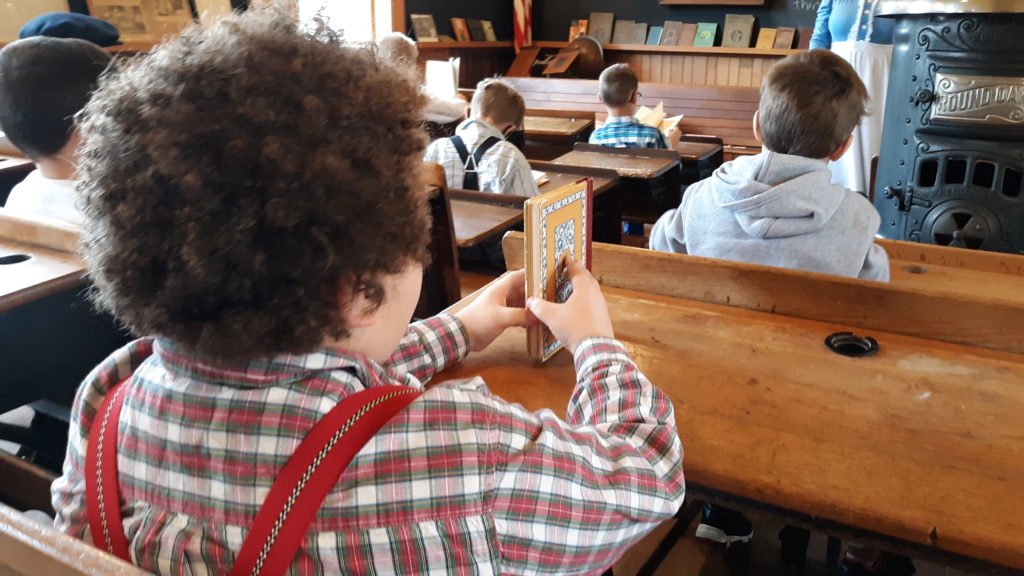
Killy asked if the old McGuffey Readers they were using were like their Crim textbooks.
“No, it’s worse,” one boy said with certainty.
The students ciphered arithmetic on the chalkboard, practiced penmanship on slates, and competed in a spelling bee.
The children packed their lunches in baskets or pails made from school cafeteria cans and twine. They tried to replicate the food from more than a century ago – packing biscuits, bacon, eggs, jerky, apples, sausage links and apple juice. A few stray gummies and bananas (which would not have been found in Northwest Ohio in the late 1800s) were tucked in as well.
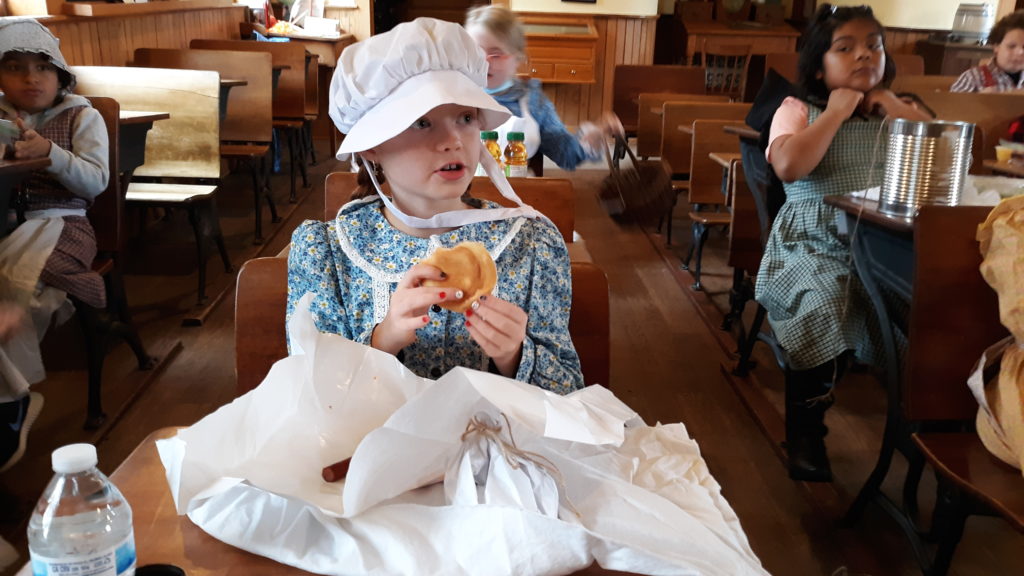
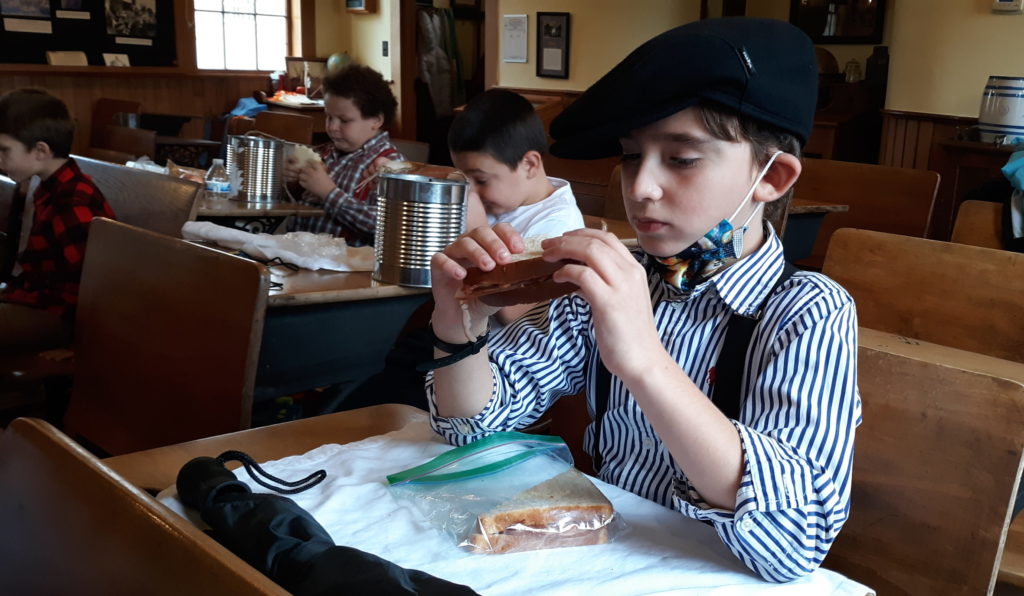
To build on the technology lesson back at Crim Elementary, the students churn butter, make ink from berries, write with feather quills, play tic-tac-toe with pebbles, and create punched tin ornaments.
These activities are funded by a grant from the BG Schools Foundation.
Normally, in pre-COVID times, all three second grade classrooms would go to the one-room school on the same day. Students would have to share desks – making it more realistic, Killy said.
Last year, because of COVID, the teachers taught from a Google Meet at the schoolhouse and porch-dropped supplies to the students at home.
“We’re so lucky we got to come this year,” Killy said.

Typically, volunteer “schoolmarms” (retired teachers) assist at the schoolhouse, but due to COVID precautions only school staff attended this week.
In addition to learning about technological changes, the students also make some good old fashioned memories, Killy said. The teachers frequently hear from former students that they treasured the day in the Little Red Schoolhouse.
“We create memories,” Killy said.


